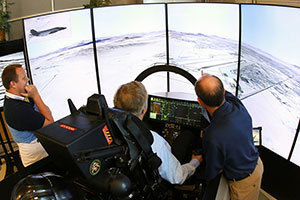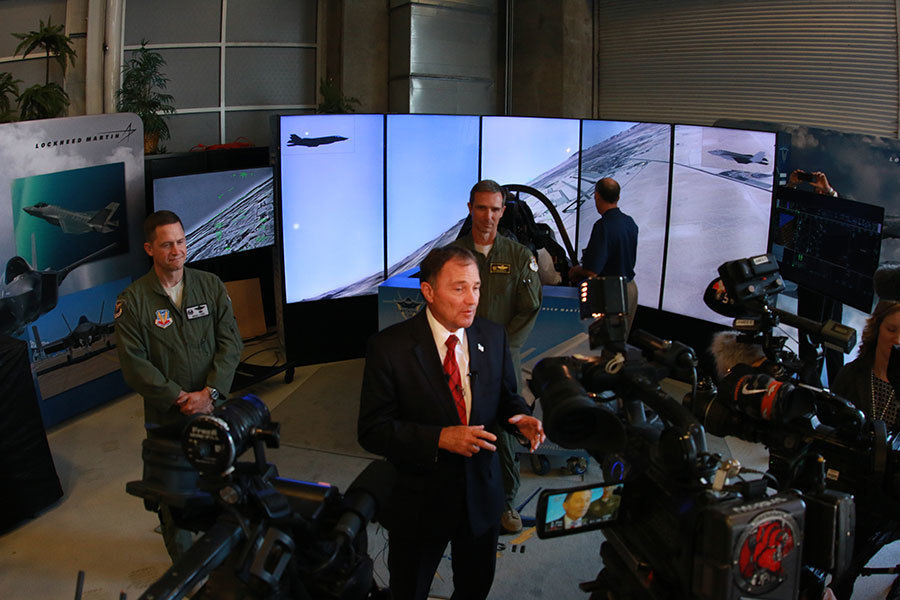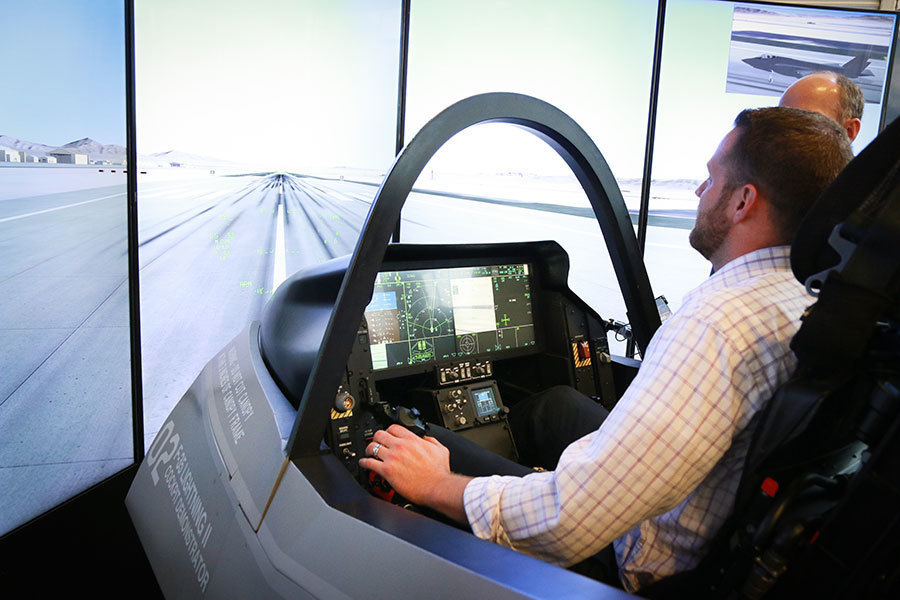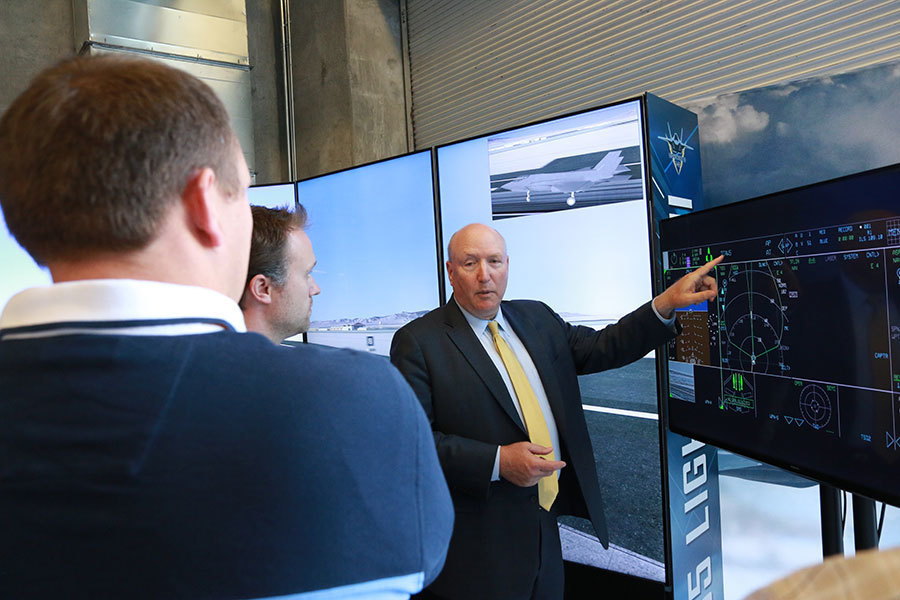
For three days, some lucky wannabe fighter pilots were able to fly the friendly (virtual) skies in an advanced F-35 fighter jet simulator on display at the University of Utah’s Rio Tinto Kennecott Mechanical Engineering Building.
The multimillion-dollar cockpit “demonstrator” (unlike a simulator that teaches pilots how to fly, this machine merely shows you what it’s like to be in an F-35) debuted Wednesday, Oct. 7, and was on display through Friday, Oct. 9, in the building’s new robotics lab. The machine was brought here courtesy of the demonstrator’s creator, Lockheed Martin Aeronautics, which is the primary contractor for the F-35 Joint Strike Fighter jet.
“We are delighted to have the F-35 cockpit demonstrator on our engineering campus since the jet is such a sterling example of how so many engineering disciplines went into the making of this state-of-the-art aircraft,” said Richard B. Brown, dean of the U’s College of Engineering.
Like a souped-up videogame, the demonstrator contains seven LCD screens in front of a real cockpit powered by advanced processors that generate the virtual terrain. Inside the cockpit is the same instrumentation as the real aircraft, including a thruster, joystick and touchscreen panel that displays the flight information.
“As a demonstrator, it closely resembles what an F-35 pilot sees inside and outside the cockpit,” said Lockheed Martin Aeronautics spokesman Mark D. Johnson. “This is designed to get you as close as you can to the real thing.”
On Wednesday, invited guests who got to fly the demonstrator included Gov. Gary Herbert, Interim Salt Lake City Police Chief Mike Brown, members of Hill Air Force Base, and several mechanical engineering students. During the three days at the newly-refurbished Rio Tinto Kennecott Building, others scheduled to fly it included state legislators, town mayors, veterans groups, and members of the University of Utah’s Engineering Alumni Association.
“The screens are around the front of you and really make you feel like you’re there,” said U mechanical engineering student, John Lillquist, 20, who got to fly the demonstrator.
The F-35 — also known as the F-35 Lightning II — is the newest, most advanced fighter jet available, according to Lockheed Martin’s Eric VanCamp, and is designed to replace the older F-16 and A-10 fighter jets. Funded by a coalition of nine countries, including the U.S. and England, 14 defense contractors in Utah had a hand in designing and manufacturing parts for the aircraft.
“A piece of Utah is in each of our jets,” Johnson said.
Currently, there are more than 150 of the F-35 jets currently flying for the U.S. and those coalition forces. Hill Air Force Base (HAFB), the military base 30 miles north of Salt Lake City which recruits many U engineering graduates, has just received its third F-35 and is expected to get one or two per month for a total of 72, said HAFB spokesman Micah Garbarino. The jet is used by the U.S. Air Force, Marines and Navy.
There are four F-35 demonstrators that tour air bases, air shows and companies contracted to work on the plane.
To learn more about the F-35, go to www.f35.com.
















